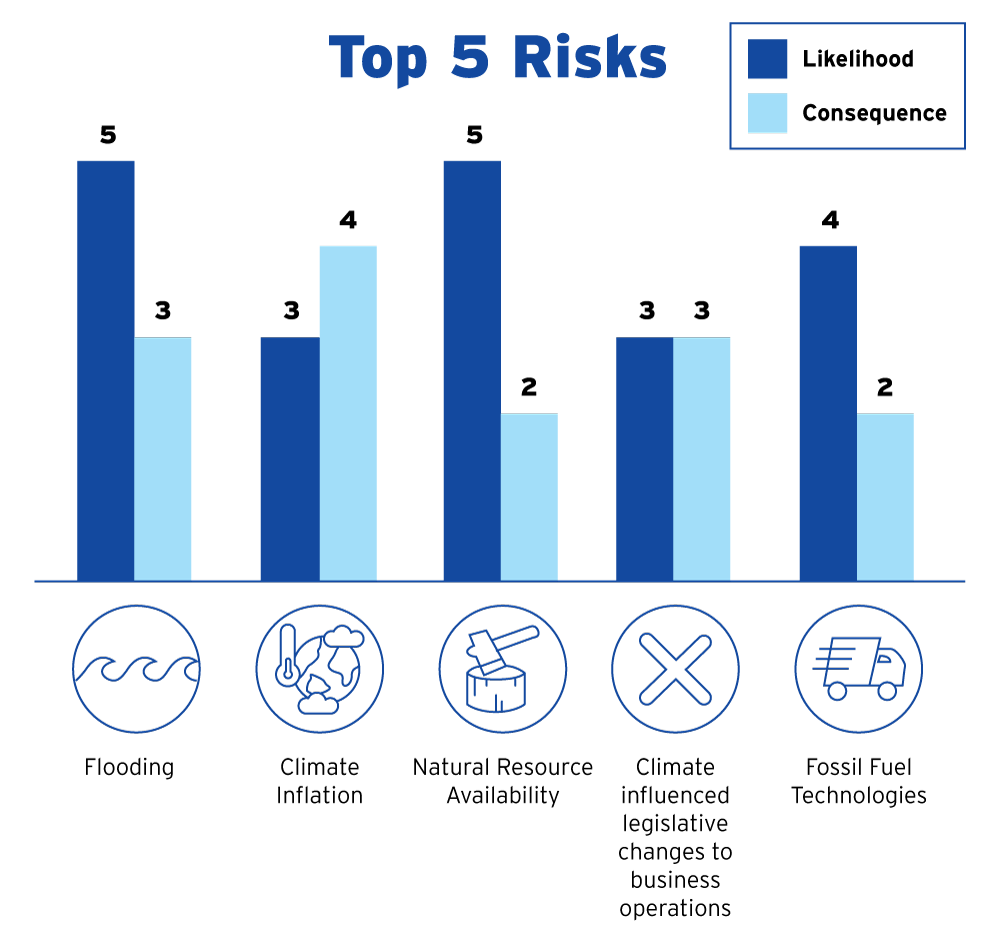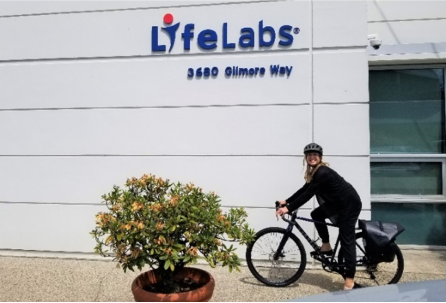We know that healthcare has created significant environmental impacts. We rely on processes that use natural resources in testing and diagnostics, and generate emissions through transportation, energy consumption, water usage, and waste generation, among others.
Over time, without proper management and planning, this can adversely affect our environment. With a belief that every action has the potential to spark positive change, we are taking steps to reduce our impact and be part of a movement taking action against climate change.
Here is what we have/are putting into action:
Climate Change Risk Assessment
LifeLabs is committed to finding opportunities to reducing our emissions, which is why we continued building our understanding of our climate impact and have been tracking our greenhouse gas (GHG) emissions (scope 1, 2 & 3) since 2017.
Our Environment and Sustainability team partnered with Western University for a project where a group of students under the supervision of LifeLabs conducted a Climate Change Risk Assessment for LifeLabs in 2022.
Taking Action with Emission Targets
The completed Climate Change Risk Assessment highlighted 24 climate change risks covering policy and legal, market, technological, acute and chronic, subcategories. The risks were ranked on potential impact, and already included in some planning practices and initiatives (we have already seen a plastics ban, seen movement on sustainable procurement policy requirements, and heard of forecasted water and resources pricing increases). The Climate Change Risk Assessment has been built into our annual risk review, to be reviewed and updated annually, prompting initiatives where required.
Bike, Walk, Roll
In 2022, the Environmental Sustainability Team conducted its first “Bike Walk Roll Week.” This was a 1-week initiative in May-June of 2022 to encourage LL employees to get active either on their commutes, or whilst living their day to day lives, by biking, walking, or using alternative, cleaner transportation.
The initiative was a success, and we look to build from this initiative by growing participation further and expanding to other environmental initiatives in the future.





